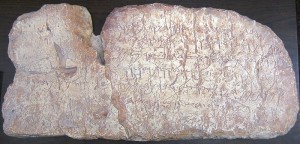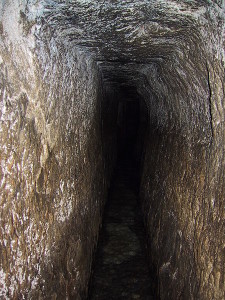Archaeology, the Bible & the Great Dating Debate
An article posted by the Biblical Archaeology Society cites a recent report published in BASOR (the Bulletin for the American Schools of Oriental Research) which calls into question the dating of the Siloam Tunnel which was supposedly excavated during the reign of the biblical king, Hezekiah. According to references in the Old Testament (specifically 2 Kings 20:20 & 2 Chronicles 32:30), the water tunnel was dug by Hezekiah in preparation of a siege to Jerusalem which was led by the Assyrian king Sennacherib in the late eighth century B.C..
The significance of this new study by Israeli geologists, Amihai Sneh, Eyal Shalev and Ram Weinberge, is the re-dating of the tunnel to the time of Hezekiah’s son, Manasseh. According to these scholars, there simply wasn’t enough time for Hezekiah’s workers to have excavated such a long tunnel. The three geologists from the Geological Survey of Israel maintain that it would have taken about 4 years to dig the 533 meter (approx. 1748 ft.) tunnel. But as archaeologists, Aren Maeir and Jeffrey Chadwick rightfully point out:
“In marshaling evidence to support their model, however, the authors entirely ignore the only contemporaneous or near-contemporaneous textual sources that shed light on Jerusalem in the Iron Age II (and that specifically mention aspects of the city’s water system)—namely the narrative passages in Isaiah 7–8 and the historical allusions in Isaiah 36 and 2 Kings 18. The only reference to Biblical material in the article is the authors’ after-the-fact quotation of the single verse in 2 Chronicles 32:30, which recalls that Hezekiah stopped the upper watercourse of Gihon and brought it down to the west side of the City of David.”[1]
In addition to this oversight, another glaring omission of the geologists is information gleaned from Assyrian inscriptional sources.[2] According to a reconstruction of this period based on Assyrian records, Judah’s revolt against Assyria began at about 705 B.C., exactly four years before Sennacherib’s siege of Jerusalem – exactly the amount of time that the geologists said that Hezekiah’s workers needed to complete the tunnel!

Siloam Tunnel inscription records when workers from the 8th Cent. B.C. met when digging from opposite directions. The inscription is now located in the Istanbul Archaeological Museum
There are two observations I would like to make about this:
- As I have stated in my previous posts on archaeology – one of the major areas of debate in Old Testament archaeology is dating and not a lack of material evidence. We have seen this sort of thing crop up in other debates in the Old Testament such as the dating of the Exodus and the Conquest – specifically the debate over Tel es-Sultan (or ancient Jericho) between John Garstang and Kathleen Kenyon and the recent work of Dr. Bryant Wood.
Skeptics of the Bible and theological liberals complain that the stories in the Bible are mostly fabrications but when we do find archaeological corroboration then they move the goal-post back by re-dating the discovery to an earlier or later date.
- The second observation is that this episode highlights the prevalence of an extreme bias against the historical trustworthiness of the Biblical text in professional scholarly and archaeological circles (specifically ASOR – the American Schools of Oriental Research and their peer-reviewed publication BASOR – the Bulletin of the American Schools of Oriental Research).
If the article was “peer-reviewed” before it was published, then how could they have missed such an oversight of basic historical knowledge?
I suspect that there will be more dating debates in the days ahead, as ongoing research and excavations in Bible lands reveal even more corroboration and affirmation that the Biblical text is indeed trustworthy when it records events that happened in the past.
As the late novelist Michael Crichton once wrote, “If you don’t know history, then you don’t know anything. You are a leaf that doesn’t know it is part of a tree. ”
All of the “leaves” of the New Testament are connected to branches which reach down to the trunk and roots of the Old Testament. As Jesus taught, “…if they would not believe Moses and the prophets, neither will they be persuaded though one rise from the dead” (Lk. 16:31).
[1] http://www.biblicalarchaeology.org/daily/biblical-sites-places/jerusalem/regarding-recent-suggestions-redating-the-siloam-tunnel/?mqsc=E3610342&utm_source=WhatCountsEmail&utm_medium=BHDDailyNewsletter&utm_campaign=E3B827, (accessed August 30, 2013).
[2] See, A. Kirk Grayson and Jamie Novotny, The Royal Inscriptions of Sennacherib, King of Assyria (704-681 BC), Part 1 (Winona Lake, IN: Eisenbrauns, 2012).


Leave a Reply
Want to join the discussion?Feel free to contribute!